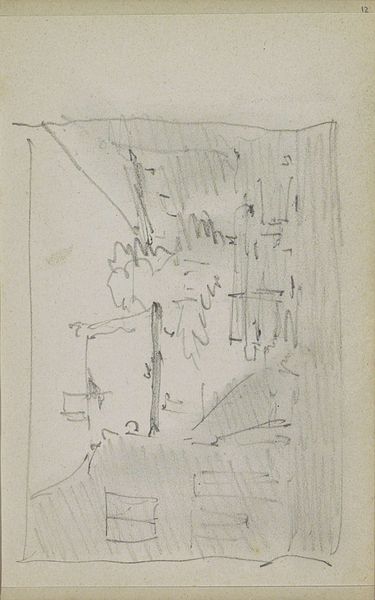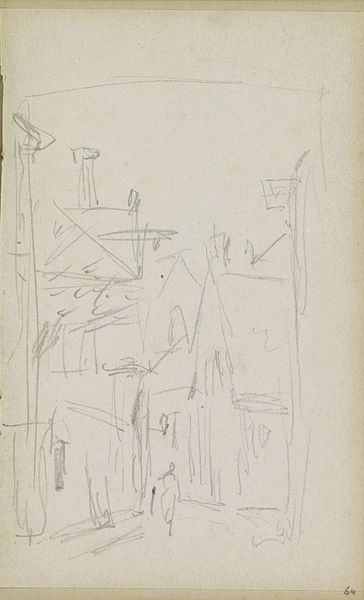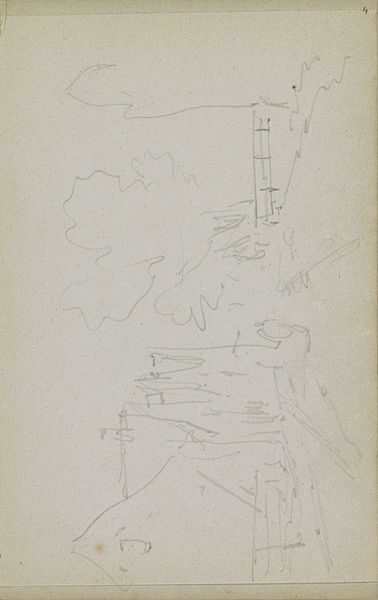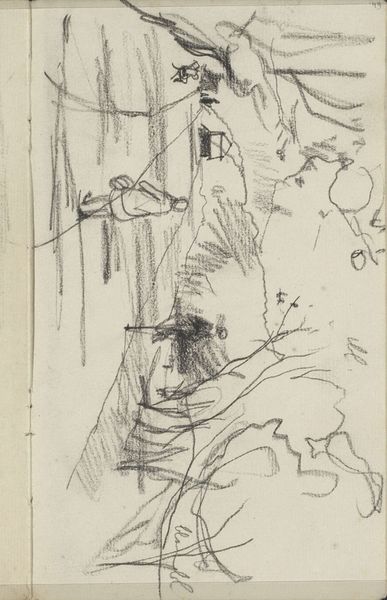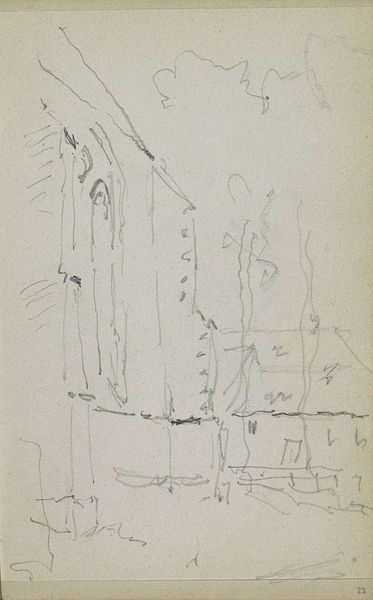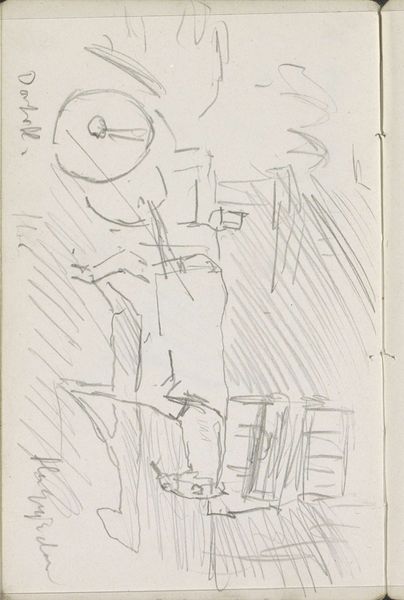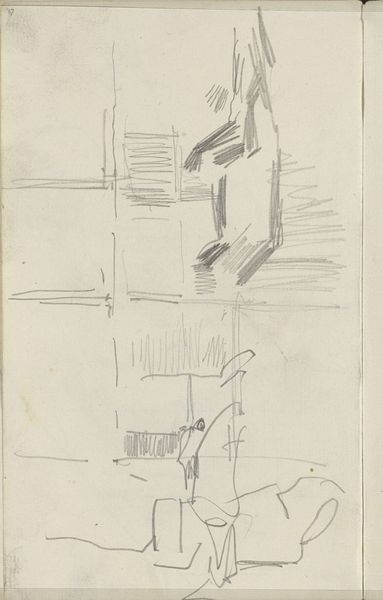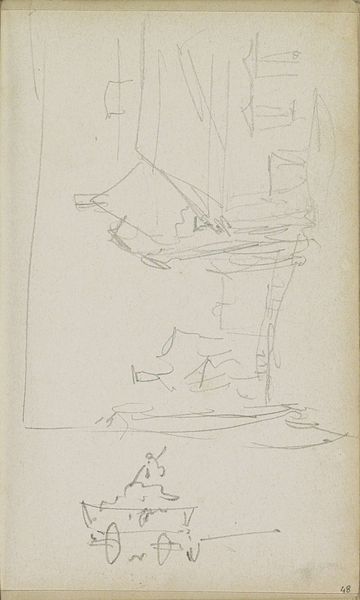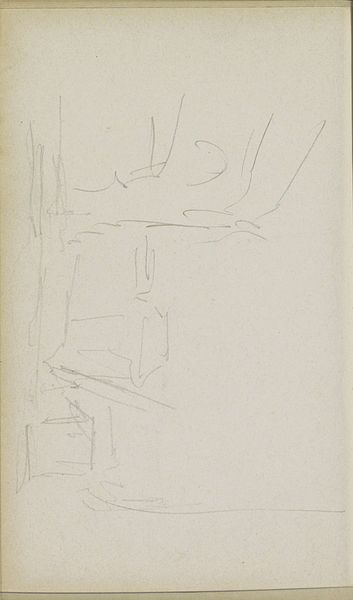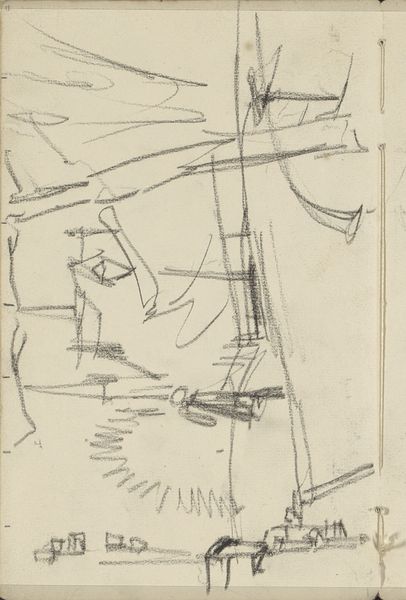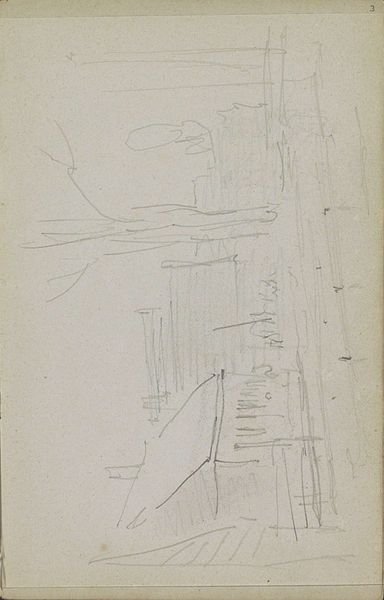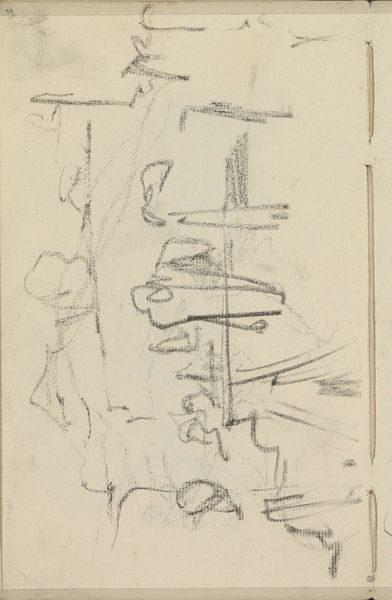
drawing, pencil
#
drawing
#
quirky sketch
#
sketch book
#
incomplete sketchy
#
landscape
#
personal sketchbook
#
idea generation sketch
#
sketchwork
#
pencil
#
sketchbook drawing
#
cityscape
#
storyboard and sketchbook work
#
sketchbook art
#
realism
#
initial sketch
Copyright: Rijks Museum: Open Domain
Curator: Welcome. Here we have "Gezicht op huizen en een kerk," or "View of Houses and a Church," a pencil drawing by Adrianus Eversen, created sometime between 1828 and 1897. Editor: It's a simple, evocative sketch, isn’t it? Looks like the kind of thing I’d scribble in a cafe while eavesdropping on conversations I pretend not to hear. There’s a quiet mood to it. Curator: Precisely. This drawing gives us a glimpse into Eversen’s process. Given his background in architectural painting, this may well have served as preliminary planning for a more developed canvas. Editor: I get the sense of it being a bit unfinished. I mean that as a compliment. It’s loose, free, suggesting possibilities rather than dictating specifics. Like an impression whispered on the wind. The eye is allowed to wander and complete what’s suggested rather than rendered. Curator: Indeed, its incompleteness allows us to contemplate how urban spaces were being imagined and represented in the 19th century, especially given the historical context of increasing industrialization and urbanization that marked the Netherlands during that period. Consider the power structures at play… Editor: You can feel the artist figuring out angles and light as you can almost hear the scraping of the pencil on the paper. Was Eversen aware he was capturing, in a sense, an almost sociological perspective, albeit unintentionally? Curator: The rapid strokes and unfinished nature hint at a negotiation between tradition and modernity. Eversen, in capturing the cityscape, arguably participates in shaping our collective memory, deciding what stories and perspectives are carried forward. Editor: I keep returning to that small, dark doorway in the house. Is that an invitation or a warning? I also love the somewhat clumsy tree looming there in the foreground. Maybe it serves to highlight the vulnerability and also the resilience of this setting. A lot of people have walked this walk. Curator: It's compelling to think about this work in terms of accessibility—how art education and art making was becoming more broadly practiced beyond academic circles, opening avenues for artistic expression across societal stratifications. Editor: Absolutely. It’s fascinating to see how a quick sketch can reveal so much about the time in which it was created, but equally so the experience of just standing still in the artist's spot with the same view and just, feeling something of what he must have felt that day. Thank you. Curator: Thank you for offering such poignant, empathetic observations.
Comments
No comments
Be the first to comment and join the conversation on the ultimate creative platform.
